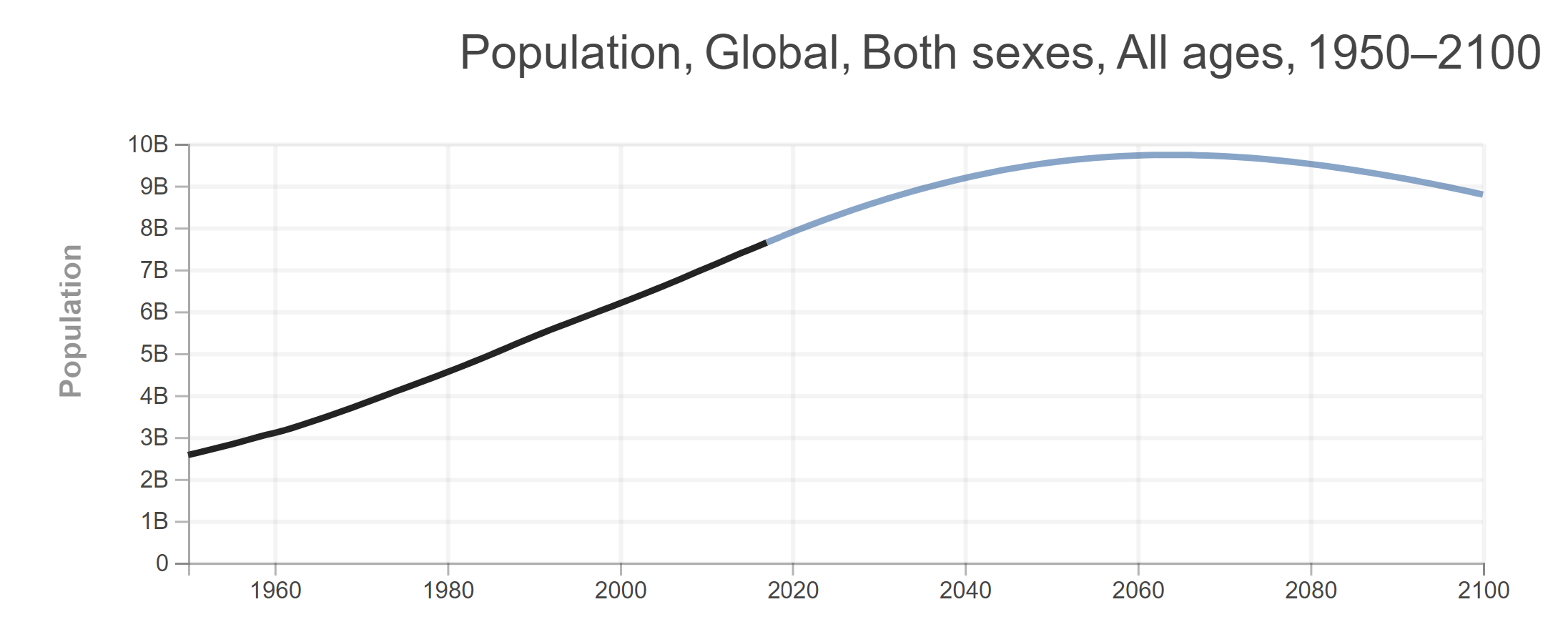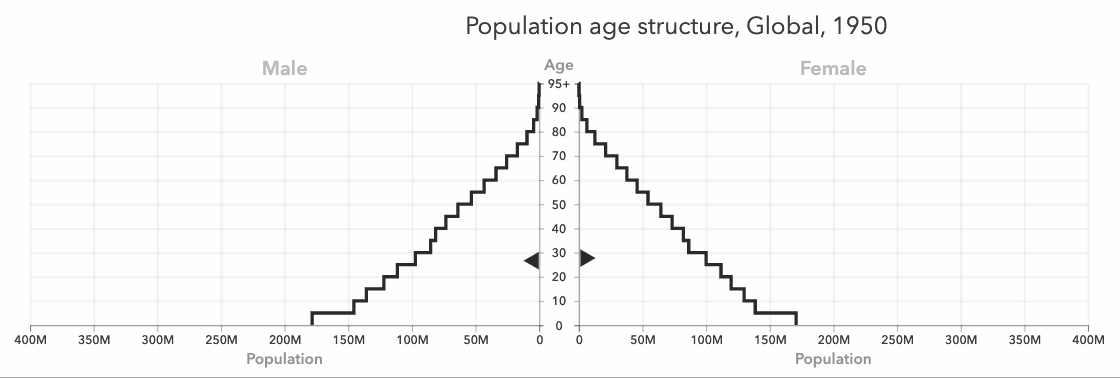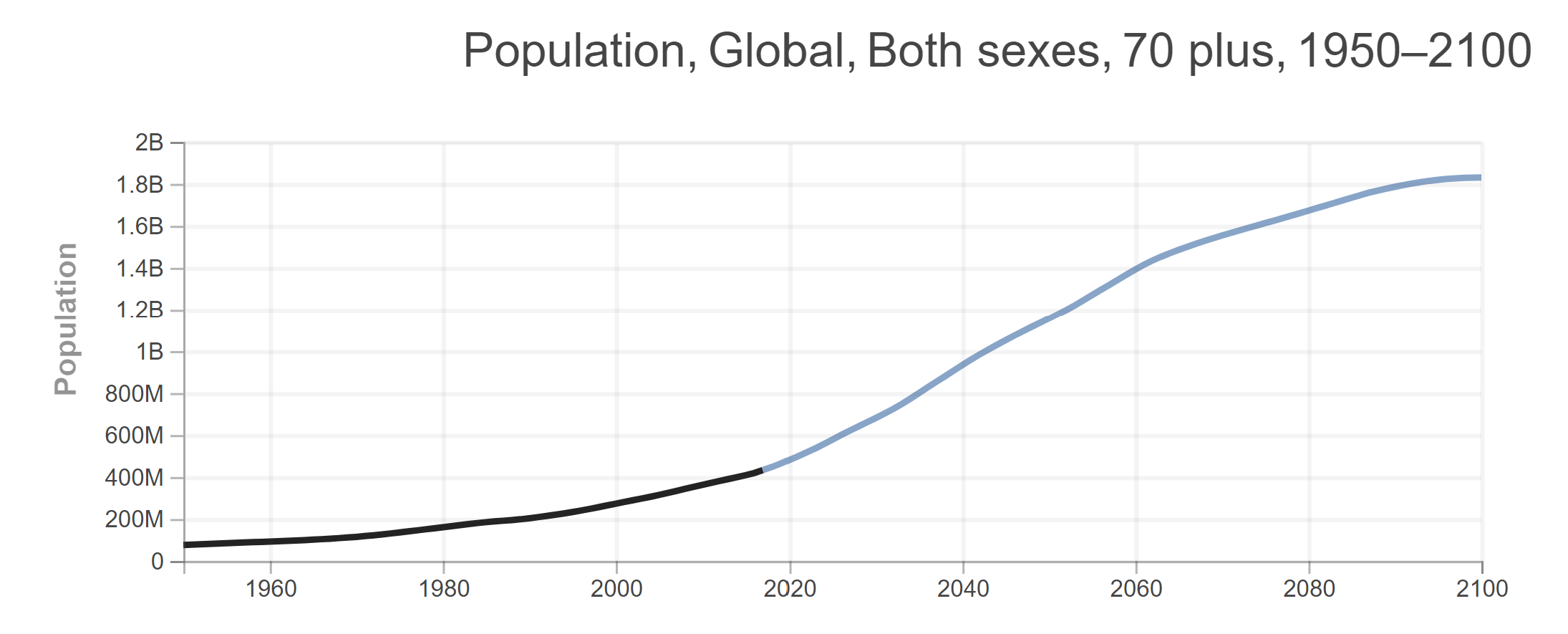Today the world’s population has reached a landmark number of 8 billion. According to IHME forecasts, that number will only continue to grow in the coming years, and the world’s population will also continue to age – substantially. As fertility declines and life expectancy increases, we can expect the average age to increase, culminating in one-fifth of the global population being over age 70 by the year 2100.
In addition to the potential implications of an aging population for labor forces, economic growth, and social support systems, it will also be essential to improve health systems and increase access to health care as a larger number of people will be at risk for age-related diseases like dementia, vision loss, and cardiovascular disease.
Despite declining fertility – which will lead to major changes to the population structure and require significant adaptations – the population is not expected to begin decreasing until just after mid-century (2064) at around 9.7 billion. From there, we forecast a continued decline to around 8.8 billion in 2100.

Source: Population Forecasting
As life expectancy increases and fertility declines, we can expect the average age on a global scale to go up. The average age of the global population in 1950 was 26.6 years for males and 27.7 years for females. Our projections estimate a nearly 20-year increase by 2100, with the average age at 45.4 years for males and 47.0 years for females.


Source: Population Forecasting
Between now and 2100, the number of people over age 70 in the world will nearly quadruple, increasing from 6.4% of the population to 20.8% of the total population. This translates to an increase of more than 1.3 billion people.

Source: Population Forecasting
In the past, a major cause of increased life expectancy has been a reduction in deaths due to cardiovascular diseases and chronic respiratory diseases. However, even as medical advances and living conditions improve worldwide, allowing people to live longer, there is still the possibility that they will live with a disability that reduces their quality of life.
Injuries from accidental falls, hearing loss, and back pain are important causes of disability among 70+ populations. Over the last 30 years, despite increases in life expectancy, disability rates have remained constant, highlighting the need to improve care for elderly populations and enhance public health strategies targeted at this age group.
As the population ages, fewer people will be of working age and more will be in need of social support systems and increased medical care. Countries will need to make decisions on how best to ensure that all their citizens are able to live their lives in full health.